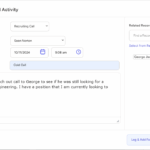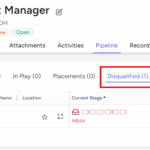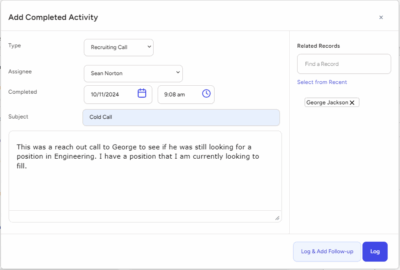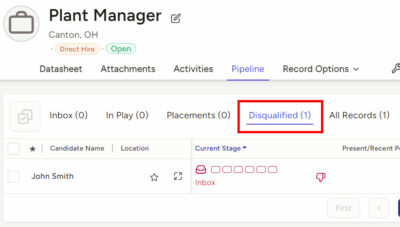Recruiting is a challenging endeavor under normal circumstances, but when faced with the task of high-volume recruiting, the stakes are raised even higher. Agency recruiters and search consultants are often required to find top-tier talent quickly, while managing multiple open positions at once. In many cases, such as during rapid business expansion, seasonal hiring, or when launching a new product line, hiring in large quantities becomes the norm rather than the exception.
However, one common pitfall during high-volume recruiting is the risk of compromising the quality of candidates. When recruiters are swamped with high volumes of applicants or requisitions, the temptation to rush through the process can lead to poor hiring decisions, which can ultimately cost the company in terms of productivity, morale, and turnover. Striking the right balance between speed and quality is not just desirable—it’s critical for long-term business success.
In this article from Top Echelon Recruiting Software, we’ll explore strategies, tools, and best practices that will help agency recruiters and search consultants handle high-volume recruiting without sacrificing the quality of hires.
The Challenges of High-Volume Recruiting
Before diving into solutions, it’s important to acknowledge the specific challenges that recruiters face when managing high-volume hiring. Understanding these challenges will help you identify bottlenecks and opportunities for improvement.
- Applicant Overload: In high-volume recruiting, the sheer number of applicants can be overwhelming. It’s not uncommon for recruiters to be flooded with hundreds or even thousands of resumes for a single job posting, making it difficult to give each candidate the attention they deserve.
- Tight Deadlines: High-volume recruiting often comes with accelerated timelines. Businesses that are scaling quickly or filling seasonal roles don’t have the luxury of extending hiring timelines, putting pressure on recruiters to move fast.
- Administrative Burden: High-volume recruiting brings with it a significant administrative workload, including reviewing resumes, scheduling interviews, tracking applicants, and managing communication with candidates. This administrative burden can detract from time spent evaluating the quality of candidates.
- Maintaining Consistency: With multiple positions to fill and a wide variety of candidates to assess, it can be difficult to maintain consistency in how candidates are evaluated. Without a structured process, it’s easy to overlook key criteria or allow unconscious biases to influence hiring decisions.
- Risk of Burnout: High-volume recruiting can take a toll on recruiters and hiring managers, leading to burnout. When overworked, it becomes easier to make mistakes, overlook red flags, or let quality standards slip.
Given these challenges, it’s clear that recruiters need effective strategies to manage high-volume recruiting efficiently while still identifying the best candidates for the job.
Strategies for Success in High-Volume Recruiting
To handle high-volume recruiting without compromising on quality, it’s essential to implement a combination of streamlined processes, technology solutions, and a focus on maintaining candidate quality. Here are key strategies that can help you navigate the complexities of high-volume recruiting:
1. Implement Structured Screening and Selection Processes
One of the most important steps in maintaining quality during high-volume recruiting is to have a well-structured and consistent screening process. Here’s how you can create and optimize your screening workflow:
- Develop Clear Job Descriptions: It all starts with a detailed and accurate job description. Ensure that job descriptions clearly outline the key responsibilities, required qualifications, and desired skills. This helps set clear expectations from the outset and attracts more relevant candidates, reducing the volume of unqualified applicants.
- Create Knockout Questions: Use knockout questions early in the application process to quickly eliminate candidates who do not meet the basic requirements. For example, if a job requires specific certifications or a certain level of experience, ask candidates to confirm these upfront. This saves time by allowing you to focus only on those who meet minimum qualifications.
- Use Pre-Employment Assessments: Pre-employment assessments, such as skills tests, cognitive ability tests, and personality assessments, can help you evaluate candidates more effectively. These assessments provide objective data on a candidate’s suitability for a role, allowing you to screen applicants faster while maintaining high standards.
- Automate Resume Screening: Resume screening tools, powered by artificial intelligence (AI) or applicant tracking systems (ATS), can automatically sift through resumes and highlight the most qualified candidates. These tools can rank candidates based on keywords, qualifications, and other factors, ensuring that no strong candidate slips through the cracks while minimizing time spent manually reviewing resumes.
- Standardize Interview Questions: To maintain consistency, develop a set of standardized interview questions for each role. Structured interviews, where all candidates are asked the same set of questions, help ensure that you evaluate everyone based on the same criteria. This reduces bias and increases the likelihood of making fair, quality-driven decisions.
2. Leverage Technology for Efficiency
In the world of high-volume recruiting, technology is your best friend. The right tools can dramatically reduce the administrative burden, improve communication, and speed up the overall process without compromising the quality of your hires.
- Applicant Tracking Systems (ATS): An ATS is a must-have for high-volume recruiting. It helps recruiters manage large volumes of applications by organizing candidate data, automating communications, and keeping track of where each candidate is in the hiring process. Some ATS platforms also integrate AI to assist in screening resumes and matching candidates to job requirements.
- AI-Powered Recruitment Tools: AI can play a crucial role in high-volume recruiting by automating repetitive tasks such as resume screening, interview scheduling, and candidate matching. AI-powered chatbots, for example, can handle initial candidate queries, provide updates, and even conduct pre-screening interviews, freeing up time for recruiters to focus on more strategic tasks.
- Video Interview Platforms: In high-volume scenarios, scheduling interviews can be a logistical nightmare. Video interview platforms allow you to conduct one-way video interviews, where candidates record responses to pre-set questions at their convenience. Recruiters can then review the interviews at a time that suits them, allowing for more flexibility and faster decision-making.
- Text Recruiting Tools: With today’s candidates expecting fast and easy communication, text recruiting platforms can improve engagement by allowing you to communicate with candidates via SMS. Text messaging is often more effective than email when trying to reach candidates quickly, and it can be used to schedule interviews, answer questions, or send status updates.
- CRM Tools for Recruitment: A candidate relationship management (CRM) tool helps recruiters manage and nurture their candidate pipelines more effectively. In high-volume recruiting, a CRM allows you to build and maintain relationships with candidates over time, ensuring that even those who aren’t hired immediately remain engaged for future opportunities.
3. Focus on Building a Talent Pipeline
One of the best ways to handle high-volume recruiting is to take a proactive approach by building and maintaining a strong talent pipeline. Instead of starting from scratch each time you have a high-volume hiring need, a well-developed pipeline allows you to tap into a pool of pre-vetted candidates who are ready to be considered for open roles.
- Engage Passive Candidates: High-volume recruiting isn’t just about filling immediate vacancies. It’s about thinking long-term. Proactively reach out to passive candidates—those who are not actively looking for a job but might be open to new opportunities. By keeping these individuals engaged over time, you’ll have a ready-made pool of candidates to draw from when high-volume needs arise.
- Create a Candidate Database: Maintain a comprehensive database of previous applicants, referred candidates, and individuals who have expressed interest in working for your clients. Segment the database based on skills, qualifications, and preferences so that when a relevant job opens up, you can quickly pull a shortlist of candidates without starting from scratch.
- Nurture Relationships: Building a talent pipeline requires ongoing engagement. Regularly communicate with candidates in your pipeline through personalized messages, updates on relevant job openings, and industry insights. This helps keep your talent pool warm and engaged, reducing the time it takes to fill positions during high-volume hiring drives.
- Employer Branding: High-volume recruiting becomes significantly easier when your client has a strong employer brand. Candidates are more likely to apply if they perceive the company as a great place to work. As a recruiter, work closely with your clients to ensure they are highlighting their strengths, values, and unique selling points to attract top talent. The stronger the employer brand, the higher the quality of the candidates in your pipeline.
4. Prioritize Candidate Experience
In high-volume recruiting, candidate experience can often take a back seat to speed and efficiency. However, a poor candidate experience can damage your reputation and reduce your ability to attract high-quality talent. Maintaining a positive candidate experience should always be a priority, even during high-volume hiring.
- Communicate Clearly and Frequently: Candidates want to know where they stand in the hiring process. In high-volume recruiting, keeping candidates informed at every stage is essential. Use automated messaging systems to send timely updates about the status of their application, and make sure to communicate next steps clearly.
- Streamline the Application Process: The application process should be as simple and straightforward as possible. Avoid requiring candidates to fill out long, cumbersome forms or submit unnecessary documents at the outset. The more seamless the process, the more likely you are to attract and retain high-quality applicants.
- Provide Timely Feedback: In a high-volume setting, it’s easy to forget to provide feedback to candidates who are not moving forward in the process. However, even a simple rejection email can help maintain a positive impression of your brand. For candidates who have made it to later stages in the process, providing personalized feedback is even more important.
- Offer Flexibility: In high-volume recruiting, offering candidates flexibility can make a big difference. This might mean accommodating different interview times, offering virtual interviews, or giving candidates more time to complete assessments. Flexibility not only improves the candidate experience but also demonstrates that you value their time and effort.
5. Track and Optimize Key Metrics
To ensure that high-volume recruiting doesn’t compromise quality, it’s essential to track key recruiting metrics and optimize your processes based on the data. By regularly analyzing the performance of your recruiting efforts, you can identify areas for improvement and make data-driven decisions.
Some of the most important metrics to track in high-volume recruiting include:
- Time-to-Fill: Measure how long it takes to fill open positions, from the time the job is posted to the time an offer is accepted. A short time-to-fill indicates an efficient recruiting process, while a longer time-to-fill might signal bottlenecks or inefficiencies.
- Quality of Hire: Quality of hire is one of the most important metrics in high-volume recruiting. Track the performance and retention rates of new hires to determine if they are meeting the expectations set during the recruiting process. This metric helps you assess whether you are successfully maintaining quality during high-volume hiring.
- Cost-per-Hire: High-volume recruiting can be expensive if not managed carefully. Track the total cost associated with hiring, including advertising, recruiter hours, assessments, and other expenses, to ensure you’re staying within budget while maintaining quality.
- Candidate Conversion Rate: Track how many candidates advance through each stage of the hiring process. A low conversion rate from one stage to the next might indicate that you need to adjust your screening or assessment criteria.
High-volume recruiting presents a unique set of challenges, but with the right strategies and tools, it is possible to manage large-scale hiring projects without sacrificing the quality of your candidates. By implementing structured screening processes, leveraging technology, building a proactive talent pipeline, prioritizing the candidate experience, and tracking key metrics, agency recruiters and search consultants can effectively balance speed and quality, ultimately delivering successful outcomes for both their clients and candidates.
In today’s fast-paced recruiting environment, high-volume recruiting doesn’t have to mean compromising on quality. With the right approach, you can meet your hiring targets while still ensuring that each candidate you bring on board is a great fit for the role and the organization.








